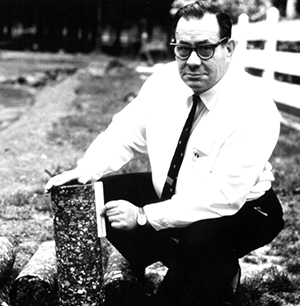In the ever-evolving landscape of transportation infrastructure, few advancements have stood the test of time quite like full-depth and deep-strength asphalt. These pavement design methods have not only weathered the elements but have also left an indelible mark on the road construction industry.
Rooted in innovation and perfected over time, full-depth and deep-strength asphalt have become synonymous with durability, longevity, and safety in the world of pavements.
A full-depth pavement is one that is constructed directly on subgrade soil and a deep-strength pavement is placed on a relatively thin (4 to 6-inch) granular base course. One of the main advantages of these pavements is their ability to significantly reduce the potential for fatigue cracking by minimizing the tensile strains at the bottom of the asphalt layer.
Resistance to bottom-up fatigue cracking is provided by the lowest asphalt layer having a higher binder content and by the total thickness of pavement reducing the tensile strains in this layer to an insignificant level. The higher binder content in this bottom layer also provides durability.
The intermediate layer provides rutting resistance through stone-on-stone contact and durability through proper selection of materials and a greater asphalt film thickness on the aggregates. The uppermost structural layer has the qualities of resistance to rutting, weathering, thermal cracking and wear, and these may be provided either by stone matrix asphalt (SMA) or dense-graded Superpave mixtures. These pavements are engineered to withstand heavier loads and higher traffic volumes, making them ideal for highways, airports and industrial facilities.
You may be familiar with these design concepts, but did you know that they were registered trademarks of the Asphalt Institute? My recent discovery of the registered trademarks for full-depth and deep-strength asphalt has ignited a newfound appreciation for the remarkable history that underpins these asphalt pavement design methods.
The journey of full-depth and deep-strength asphalt began as a quest to solve the persistent problems of pavement distresses and structural failures that lead to costly repairs and frequent disruptions. The Asphalt Institute’s pioneering efforts bore fruit with the introduction of full-depth and deep-strength asphalt pavements in the 1960s. These design concepts quickly gained recognition for their ability to resist the ravages of time, traffic, and temperature fluctuations.
Deep-strength asphalt was registered as a trademark by the United States Patent and Trademark Office on December 28, 1965 (Registration number 0801120), and full-depth asphalt on November 26, 1968 (Registration number 0861204). They were adopted by agencies such as the West Virginia Department of Transportation, the Indiana Department of Highways and the city of Phoenix.
A study by the National Center for Asphalt Technology (NCAT) published in 1992 showed that when rutting occurs in thick pavements such as full-depth and deep-strength asphalt, it is likely to be confined to the top two inches of the structure. When this occurs, an economical solution is to remove the top layer of material and replace it to the same level (mill and fill).
The terms “full-depth” and “deep-strength asphalt” became symbols of quality and reliability in the construction industry. Today, they remain at the forefront of pavement design.
Discovering the histories of these design concepts has given me a profound sense of connection to the Asphalt Institute’s legacy. These iconic terms embody our collective dedication to innovation and excellence in asphalt technology. The legacy is a source of pride and inspiration. It serves as a reminder that innovation and dedication can pave the way to a future where our roads are safer, more durable and more sustainable than ever before.
Agbedor is the Asphalt Institute Canadian and Research Engineer based in Canada.















